My recent two trips to Yosemite, with the valley still stuck in deep winter, leaves me hundreds of photos to process. My workflow is time consuming and demands precision. So, will I ever be able to go through all the potentially worthy captures in these sets? Stay tuned.
The point here is that I don’t really regard a photo as finished until I have post-processed it. Looking at the RAW file (even along with the camera-generated JPEG of the same image) it can be difficult for me to visualize the final result–and I’ve processed thousands of images, of course.
As I progress as a digital photographer, I’m coming to learn that digital photographs are different “animals” from film photographs. This corresponds to my shifting using of the noun (and verb) “capture” instead of “photograph” (and “to photograph”). The raw RAW image is really much more like a scan capture than a silver halide photograph; the RAW capture becomes something new after it has been post-processed.
There really should be a new word for this new digital visual thing, but for now I guess “photograph” will have to do!
Well, I’m pleased that I’ve captured (though not processed) the bulk of the images I need for my book, the “Photographer’s Guide to Yosemite and the High Sierras.” I’m pleased also that I need to go back to Yosemite and other parts of the Sierras to fill in a few “corners.” And I’m pleased that Julian and I have had such a great time in Yosemite, and look forward to many years of photographing, camping, and hiking with Julian (and his younger brothers).
That’s all a mouthful. Here are some more photos of the winter-bound Yosemite (and one of Julian making snow angels along the banks of the Merced):
View this photograph larger.
View this photo larger.
View this photo larger.
View this photo larger.
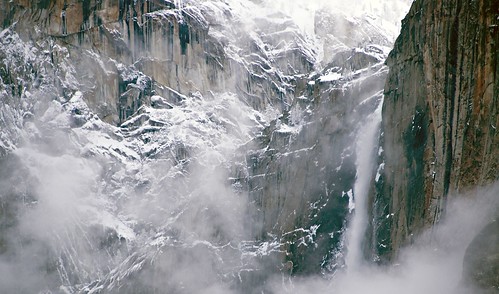
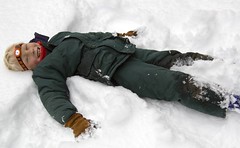
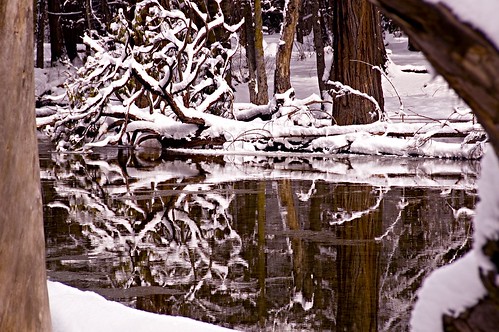
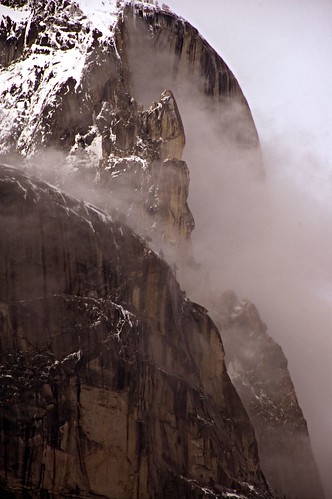
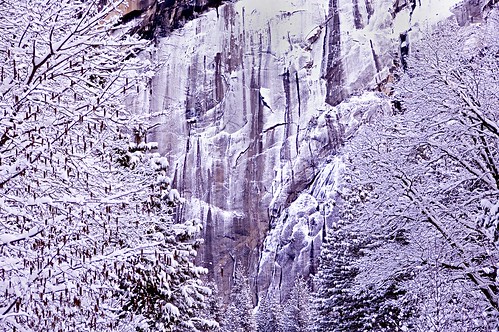
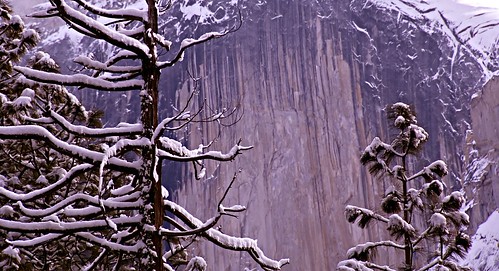
Pingback: Photoblog 2.0: » Photoblog 2.0 Archive: » Yosemite Falls from Sentinel Bridge
Yosemite Indian
22 Jun 2006Beautiful photos. In 1851 some of the Mono Paiutes were visiting their brethren the Ahwahneechees who were a band of Paiutes. When they were trapped by really bad snow.
Chief Tenaya gave himself up with a few of his people so that the rest of his people could escape. Jim Savage did not believe that his people had deserted Tenaya and pushed on and captured my people as they tried to cross to Mono Lake. Some Lake is the home of Kutzidika’a (Brine Fly eaters). Some had gone up through Northern Tuolumne to escape on that route.
My people were also the people of the Upper Tuolumne. The wild area that very few non-indigenous people traveled into. They feared the “wild” Paiutes who did not like interlopers. Paiutes also roamed Hetch Hetchy Valley.
http://thehive.modbee.com/?q=node/180
Captain Jim was the leader of the Paiutes around Bridgeport (Piauga Tickutta – Pandora Moth larvae eaters) and Hetch Hetchy.
My Great Uncle said they called his father “White Wolf”.
The Paiutes of Yosemite would climb the side of the mountains and cliffs and throw rocks on any invaders. Many feared to enter Yosemite Valley. Chief Bautista, or Vow-ches-ter, and Russio were the ones who told the Mariposa Battalion that they called Chief Tenaya and his band “The Yosemites”, which in Miwok meant “The Killers” or “The Grizzlies”.
Tenaya loved that those who feared him called him “The Grizzlies” and the Mono Paiutes bragged about his exploits. He was considered like a Robin Hood.
There were two groups that refused to sign the treaties that Chief Bautista had agreed and advised the other chiefs to do. That was the Chowchilla Yokuts and Chief Tenaya’s band. Later after they were the captured the Chowchilla Yokuts finally relented. When Chief Tenaya was captured and taken to the reservation on the western side of the Sierras he lambasted the the other chiefs. He told them that they looked ridiculous in their new red scarfs, fancy shirts and pantaloons. He hated the rich food that they served the rest of the Indians.
He took his band when he had a chance to slip out of the reservation and made the long hard trip over the Sierras returning to Mono Lake. There the Paiutes gave him and his band their own piece of land. Later he slipped back into Yosemite without the knowledge of his Paiute brethren.
During that time James Savage was killed by a man named Mr. Harvey. The chiefs who signed the treaties and their people ran to the dead body of Savage and cried “Our White Father is Dead”! They were so distraught they could not even remove his body. They said they wanted to die with him and some even drank his blood. That was in Sept. 1852 a year and a half after Savage had gone into Yosemite to capture Tenaya.
The Paiutes were glad that the man who had caused them so much grief had died. They had blamed Savage for the death of Tenaya’s son and many of our people. They believed that Savage had used the Indians to become rich and he still died in his quest for gold. That was the “Curse of Chief Tenaya”.
In 1853, Tenaya’s men instead of stealing horses from the white man, whom they feared would try to re-capture them, stole horses from their brethren the Mono Lake Paiutes. The Paiutes were so incensed that their hospitality had been repaid with treachery that they tracked down Tenaya’s band and attacked them. They decimated the Ahwahneechees, only a handful of men escaped and rest of the child bearing women and children were taken back to Mono Lake and absorbed into the tribe. It was reported that the young chief of the Monos Captain John or Poko-Tucket (Horse eater) picked up the rock and threw it on Tenaya’s head killing him.
In 1854, a year after Tenaya’s death, the only Indians in Yosemite were Paiutes looking at the prospects of the acorn crop.
Yosemite Indian chiefs.
http://thehive.modbee.com/?q=node/153
Yosemite Indian
29 Jun 2006lol…after reading my post. I can’t believe I am such a bad speller.
Your photos are some of the best Yosemite winter photos I have seen.